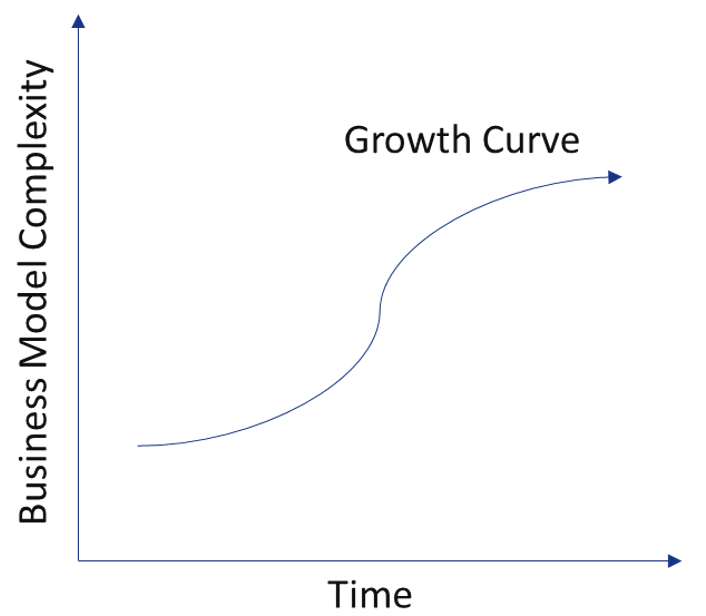Driving organic growth is consistently one of the top goals of for-profit businesses or organizations. Other goals such as quality, customer and employee satisfaction, research and other investment, cash flow, and capital deployment are also important depending on the industry and customer expectations. However, many of these goals are ultimately derived from a healthy growth profile that is a key focal point for increasing a company’s valuation.
The Growth Dilemma
The typical growth path is to 1) provide a unique, differentiated product or service that meets an unmet need in the market and then 2) leverage that initial success to extend into an adjacent product and service, and so on. At some point, however, that initial growth curve begins to flatten as competition and commoditization sets in. Therefore, companies must:
- Move their business model from “simple” (i.e., sell products and related services) to a more complex one (i.e., services and solution-led, services-followed, services aside, etc.) to maintain and/or reignite their growth curve.
- Recognize and accept they are on a longer strategic journey that is more than making a few acquisitions to become a technology focused company (i.e., software).

The Need for a CCO
The introduction of the Chief Commercial Officer (CCO) for companies both small and large has resulted from the need to help businesses harness the entire commercial power of the organization. Before the advent of the CCO, sales responsibilities were (and to some extent, still are) centered on the Executive Vice President of Sales or “Head of Sales” who reports directly to a key C-level leader in the organization like the CEO or COO. At first glance, the responsibilities of the CCO and sales leader seem similar. However, there are key differences in the roles beyond reporting structure and elevation to CxO status.
The Chief Commercial Officer (CCO) is key to addressing the uncertainty in the B2B market and guiding companies through the growth challenges of a complex marketplace. The position’s existence attests to an organization’s need for a single leader focused solely on the commercial side who can orchestrate all the moving parts – strategy, innovation, product development, marketing, and sales – across all platforms, both digital and brick-and-mortar.
The Role of a CCO
The CCO is a different leader in the sense they have the skills to design, build, and implement a new business operating model that spans numerous functions and drives outcomes across multiple – and new – metrics. For example:
| Business/Operating Model Changes | Business Impact |
| Portfolio strategy
Segmentation of markets and accounts Complex accounts and account management Simultaneously run multiple sales motions – complex solutions, transactional, services-led, etc. Update talent and human capital New product/service/solution launch |
Growth: revenue, margin, market share
New Logos Reduced churn, leakage ROI improvement on Go-To-Market, marketing, sales force, product and service development Improved access to customer executives Improved customer intimacy and consistency in the commercial life cycle, thus improving the customer experience |
The Chief Commercial Officer should be the internal strategist and external spokesperson for how the company interfaces with its customers to drive current and future growth. The CCO’s interaction and contemplation on customers is not only financial or growth-driven but holistic. The CCO looks at account relationships and positioning, customer executive-level bonding (i.e., customer intimacy), and offering and product footprints at clients and in the marketplace. They are truly the chief in charge of the revenue model and its execution for the business.
In our next blog, we will share the expectations of the CCO and how the role and responsibilities differ from a Chief Revenue Officer (i.e., Sales Leader) and the Chief Marketing Officer.
Written by: Mark Slotnik
About the Author:
Mark Slotnik has spent nearly 20+ years advising clients in the areas of designing and taking to market high-value business solutions, solution portfolio management, talent development, resource management, business process re-engineering and commercial software.
